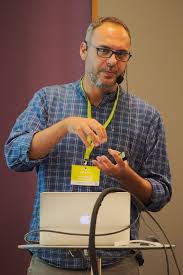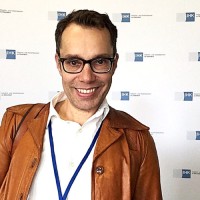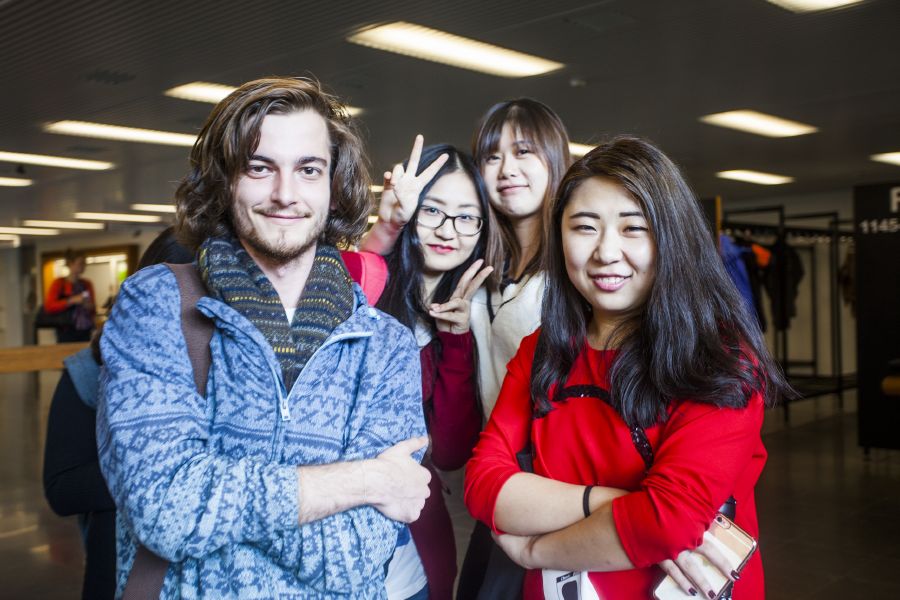Open positions
We offer multiple (4-6) 3-year positions with a potential extension on levels of:
- PhD candidates
- Postdoctoral researchers
The positions will offer excellent opportunities to work in a team of professionals responsible for developing cutting edge computer vision, machine learning technology and cybersecurity at the cross-roads of practical smart city applications. We will use, for example, unmanned aerial vehicles for the data collection in the context of cities. The researchers will work together as a team allowing mutual learning and exchange of skills.
Applicants
We welcome applications with any research focus related to cybersecurity, computer vision and machine learning. In addition, we are especially seeking candidates with the following research focus:
- Operations on encrypted data (SSE, FE, ABE)
- Embedded security architectures
- Computer vision and machine learning for drones
- Urban informatics and 3D modelling
The successful candidates have strong programming and mathematics background. Experience in (or strong will to learn) programming with Python or C++/Java and skills in creating tools and extensions for deep learning and 3D visualization, are considered as advantages.
Teams and research
The Principal Investigators of the project are Billy Bob Brumley (Cryptography and cybersecurity, co-leading the [Network and Information Security NISEC Group](https://research.tuni.fi/nisec/)), Antonis Michalas (Cybersecurity), Harry Edelman (architecture, urban design and urban informatics) and Joni Kämäräinen (computer vision and machine learning). The PIs have strong experience on cryptography, cybersecurity, computer vision, machine learning, and urban design in smart cities. More information of our research is available on our web pages linked below.
 |
 |
 |
 |
| Billy Bob Brumley | Antonios Michalas | Harry Edelman | Joni Kamarainen |
Operations on encrypted data (SSE, FE, ABE)
We will be focusing on building lightweight cryptographic protocols that will allow constrained devices to communicate securely over possibly unsecure channels. In addition to that, we will look into ways of leveraging the power of secure hardware in order to design and develop protocols that will allow data processing (both in encrypted and unencrypted form) in a privacy-preserving manner. For more details, contact Billy and Antonios.
Computer vision and machine learning for drones
In this project computer vision provides data source for urban informatics, i.e. information about the users of urban areas. The urban area can be a limited region in indoors (accessible space) or outdoors (within GPS coordinates). Video streams are provided by drones that make the vision system active, i.e. it can move to capture more information. There are four fundamental problems addressed: 1) map the unknown region (pre-defined outdoor region or restricted indoor region) – metric and semantic mapping, 2) localize yourself in the given map, 3) detects objects (people, cars) and things (smoke, fire) and 4) localize the detected objects and things on the map. These provide tools for urban informatics such as “count people inside this region”, “deliver an item X to the location A”, “alarm if smoke detected in this region” or “calculate the green area in these blocks”. Our approaches to find solutions are based on the state-of-the-art techniques in computer vision, robotics and machine learning and we always seek better solutions using the cutting edge technologies such as deep learning and reinforcement learning. In the beginning of the project we will identify important and interesting sub-topics and we aim to publish ours works in the top-tier conferences of computer vision (CVPR, ICCV, ECCV, ACCV, BMVC), machine learning (ICLR, NeurIPS, ICML) and robotics (CoRL, ICRA). For more information, contact Joni.
Urban informatics and 3D modelling
Our main interest is to make urban design based on active data flows from the location. To that aim, we need to build digital content and semantic understanding of the spaces as a contextual settings for versatile behavioral events in architectural space, either in outdoors or indoors. The behavioral events, for example bicycling, can be detected, analyzed and visualized in the context of spatial model to understand and communicate the needs for design or management of urban space. People oriented cities call for in-depth understanding how people use the cities and what kind of cities appeal to people. For example, Jane Jacobs (1961) and Jan Gehl (2011) have used systematic observations to collect data about the use of the urban environment. Now, machine learning and IoT devices provide powerful tools for creating in-depth understanding about cities and ways to build livable and resilient environments. For more information, contact Harry.
Embedded Security Architectures
We will augment drones with SoC-based devices and technologies for hardware-based security. We are looking for embedded security expertise, and an interest in tinkering with low-level software and hardware. We will utilize Trusted Execution Environment (TEE) technologies such as ARM TrustZone and RISC-V analogues. We are interested in its access control and Trusted Application (TA) features. Side Channel Analysis (SCA) on all levels is also a strong aspect — both physical channel (power, EM, etc.) and software-based (timing, microarchitecture, cache, etc.), applied not only to the crypto functionality, but general security and even Machine Learning implementations.
Host institution
Tampere University is situated in Central Finland being a leading hub for engineering and technology in Finland.
The Computing Sciences Unit at Tampere University provides world-class research and education in modern computer science to foster future science, engineering and society. The work combines fundamental research with innovative applications while the tradition of working with the industry stakeholders has been very strong in Tampere. It is the largest computer science unit in Finland and collaborates with many international companies.
Working and studying in Finland
Finland has been assessed to be among the best countries in the world with respect to many quality of life indicators, including being the overall #1 country in human wellbeing and happiness. Finland’s education system has been ranked as #1 during several years. Finland has the world’s youngest female Prime Minister and we pursue equal opportunities for all. Finland is among the leading countries in ICT & Digitalization, from 5G networks to financial technology, artificial intelligence and AR/VR innovations to IoT, digital education and health solutions. More information about studying and working in Finland can be obtained from the links.
Compensation
The starting salary of a PhD student is ca. 2400 EUR per month and it will increase during the studies depending on the progress (up to 3100 EUR per month). The salary for a postdoctoral researcher is typically ca. 3 500 EUR per month.
In addition to the salary, the contract includes occupational healthcare benefits, and Finland has a comprehensive social security system.
How to apply
The first stage of the application process is very light. There is no need for motivation letters or research statements. You only need to email the following documents to the address arrowsmith.tau(at)gmail.com:
- Curriculum vitae (inc. list of publications)
- School and university score records
- Indicate also the position type using one of the following tags in the email subject: [phd], [postdoc]
The deadline for the applications is August 30th, 2020. The review of applications will be done on a rolling basis, so early submissions are strongly encouraged. The starting date of the positions will be negotiated individually.
References
For a complete list of our works, see our homepages and arXiv.
Gehl, J. 2011. Life Between Buildings: Using Public Space. 6th Edition. Washington, US: Island Press.
Jacobs, J. 1961. The Death and Life of Great American Cities. New York, US: Random House Inc.
I. Miller et al. 2020, “Mine Tunnel Exploration using Multiple Quadrupedal Robots,” in IEEE International Conference on Robotics and Automation (ICRA).
T. Ozaslan, G. Loianno, J. Keller, C. J. Taylor, V. Kumar, J. M. Wozencraft, and T. Hood (2017), “Autonomous Navigation and Mapping for Inspection of Penstocks and Tunnels With MAVs,” in IEEE Robotics and Automation Letters, vol. 2, no. 3, pp. 1740-1747.

